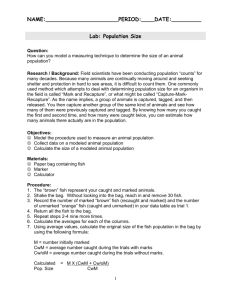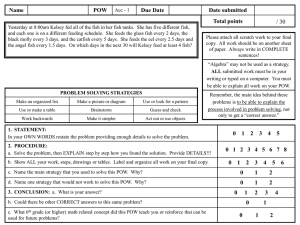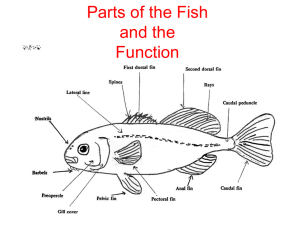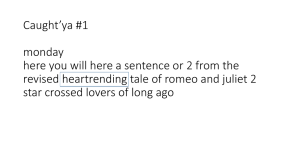Running Records PPT K-2
advertisement
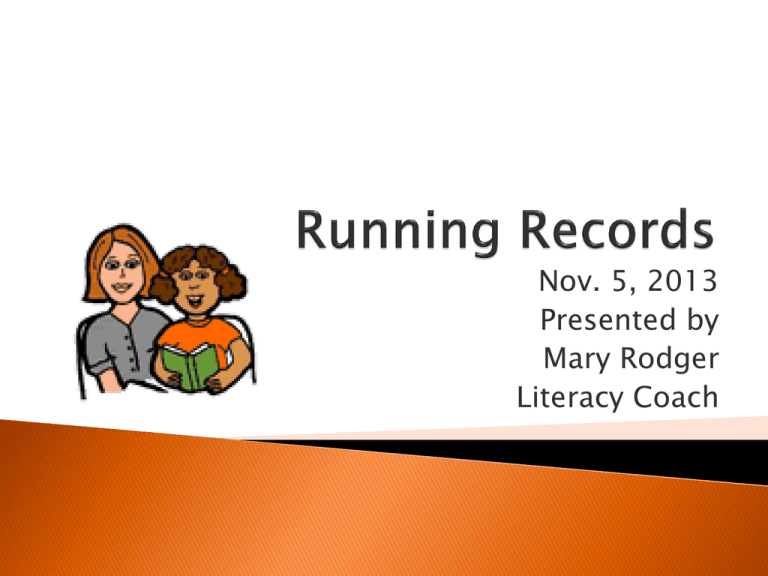
Nov. 5, 2013 Presented by Mary Rodger Literacy Coach “Yet a funny thing happens on the way to those final assessments: day-to-day learning takes place. I am certain that, in education, evaluation needs to pay more attention to the systematic observation of learners who are on their way to those final assessments.” (p. 1) Clay, M. (1987). Reading begins at home: preparing children before they go to school. Portsmouth, NH: Heinemann. Developed by Marie Clay from the early reading studies she conducted in the 1960’s A way for teachers to quickly and easily assess their students' reading behaviors “on the run” Simplification of miscue analysis done at 3rd grade and above Uses only the first 100-150 words in a passage (or the whole thing if it’s less) A record of reading behaviors – a “snapshot” Specific type of shorthand, or codes, record detailed information during the reading ◦ Codes are “standardized…consistent across settings and among teachers” This running record, “provides the teacher with a playback of an entire oral reading episode, including the smallest details on the reader’s attitude, demeanor, accuracy, an understanding ” (p. 10) (Shea, M. 2000. Taking running records. New York: Scholastic) Assessment tool Document progress Provide insights into the child’s reading strategies Plan for future instruction Find appropriate reading level of student To guide reading instruction www1.rcas.org/literacy/pdfs/assessmenthand out.pdf Teacher’s role: to observe child’s reading behaviors while tracking accuracy and errors on separate sheet of paper Child’s role: to read chosen text independently with minimal assistance from teacher Choose a book/passage that child has not read before Teacher sits next to child in order to view passage On separate piece of paper, write a checkmark for each word read correctly* When mismatch occurs during reading, draw a line* ◦ It can also be done with a Benchmark book – one that represents a certain level, but one that the child has never read before ◦ Child’s behavior above the line Correct word (and any teacher’s actions) below the line At the end of the oral reading, teacher may ask child to retell story in his/her own words or may ask a series of comprehension questions. *Fountas, I.C. & Pinnell, G.S. (1996). Guided reading: Good first teaching for all children. Portsmouth, NH: Heineman. Teacher Notation √ T SC ^ TTA R ← A // Meaning Correct word Told (by teacher) Self correct Omission Insertion “try that again” Repetition (per word) Repetition to a starting point Appeal (asks for help) Long pause Error No Yes No Yes Yes Yes Yes Yes No No Accuracy rate: subtract numbers of errors from total number of words, then divide by total words, and multiply by 100 ◦ Ex: 50 total words – 4 errors = 46 ◦ 46/50 = .92 ◦ .92x100 = 92% 95-100%: Independent level 90-94%: Instructional level Below 90%: Frustration level Fountas, Irene C. and Pinnell, Gay Su. (1996). Guided reading: Good first teaching for all children. Portsmouth, NH: Heinemann. Self-correction ratio: ◦ (# of errors + # of self-corrections)/# of selfcorrections = self-correction ratio ◦ (8+3)/3 = 3.666 = 4 ◦ SC rate is 1:4 Error ratio: ◦ Total words/total errors = error ratio ◦ 50/4= 12.5 (round up to 13) ◦ Error rate is 1:13 At the Zoo We saw bears. We saw elephants. We saw giraffes. We saw lions. We saw monkeys. We saw tigers. We saw zebras. We saw lots of animals at the zoo. http://www.youtube.com/watch?v=qEd-mZsCVg8 At the Zoo see We saw bears. see We saw elephants. see We saw giraffes. see We saw lions. see We saw monkeys. see We saw tigers. see We saw zebras. see A/T an…mi..mals.. We saw lots of animals at the zoo. Total # of words = 29 Total # of errors = 12 29-12 = 17 17/29 = .59 .59 x 100 = 59% A Fishy Story On Monday I dreamed I caught a fish. It was as big as a bird. On Tuesday I dreamed I caught a fish. It was as big as a cat. On Wednesday I dreamed I caught a fish. It was as big as a dog. On Thursday I dreamed I caught a fish. It was as big as a man. On Friday I dreamed I caught a fish. It was as big as a horse. On Saturday I dreamed I caught a fish. It was as big as a whale. On Sunday I really went fishing. I caught a little, tiny fish. http://www.youtube.com/watch?v=4eW_u496T2s A Fishy Story taught On Monday I dreamed I caught a fish. duck It was as big as a bird. Thursday taught On Tuesday I dreamed I caught a fish. It was as big as a cat. taught On Wednesday I dreamed I caught a fish. It was as big as a dog. taught On Thursday I dreamed I caught a fish. It was as big as a man. taught On Friday I dreamed I caught a fish. It was as big as a horse. On Saturday I dreamed I caught a fish. It was as big as a whale. On Sunday I really went fishing. taught I caught a little, tiny fish. Total # of words = 102 Total # of errors = 8 102 – 8 = 94 94/102 = .92 .92 x 100 = 92% LearnNC.org: Ongoing Assessment for Reading ◦ http://www.learnnc.org/lp/editions/readassess/1.0 Reading A-Z.com ◦ http://www.readinga-z.com Clay, M. (2000). Running records for classroom teachers. Portsmouth, NH: Heinemann. Fountas, I.C. & Pinnell, G.S. (1996). Guided reading: Good first teaching for all children. Portsmouth, NH: Heinemann. http://www.timrasinski.com/?page=presentati ons

